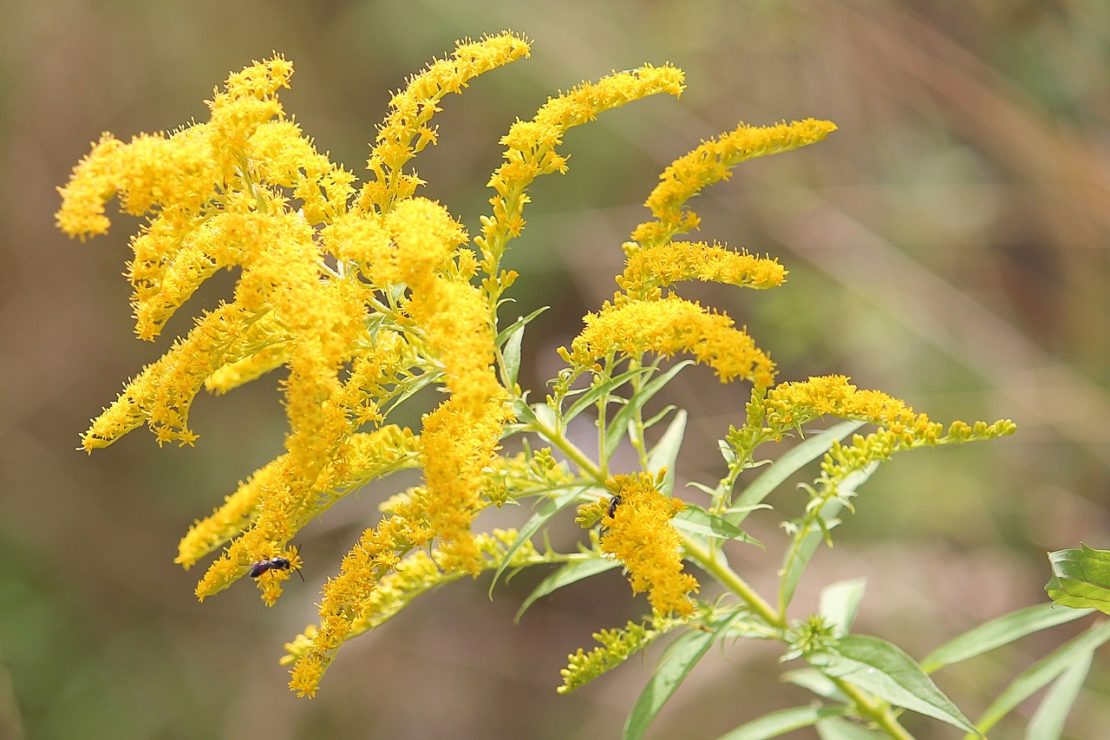
7 Useful Herbs You Can Harvest In The Fall
It’s autumn, and we’re deep into the annual cycle of harvest at the close of a growing season.
Sure, we’ve been harvesting plenty of fresh fruits, vegetables, and gorgeous leafy aromatic plants for several months now, but when it comes to herbs, fall is a special time for harvest. The plant energy that was devoted to the growth of aerial parts of the plant in the spring and summer is now turned inward and downward, delivering vital resources to roots and inner bark.
This is the time for harvesting fall herbs. Below, let’s learn more about fall harvesting as well as 7 useful herbs you can harvest in the fall.
Harvesting Fall Herbs
Because it’s not yet winter, the soil is still warm and soft enough to yield roots when we dig for them. Fruits and seeds left on the plant have matured fully and dried on their own, so that they need no further drying or processing before storage.
Depending on where you live, the fall harvest season may come closer to the autumn equinox (the “harvest moon” is in fact the name given to the full moon that falls closest), or fall harvesting might take you well into December. For this reason, you’ll want to watch the plants you intend to harvest for certain signs. For example, if you want to harvest flowering plants like dandelion and chicory, you’ll wait until after flowers are produced before digging the root.
7 Useful Herbs You Can Harvest In The Fall
Seeds & Fruits
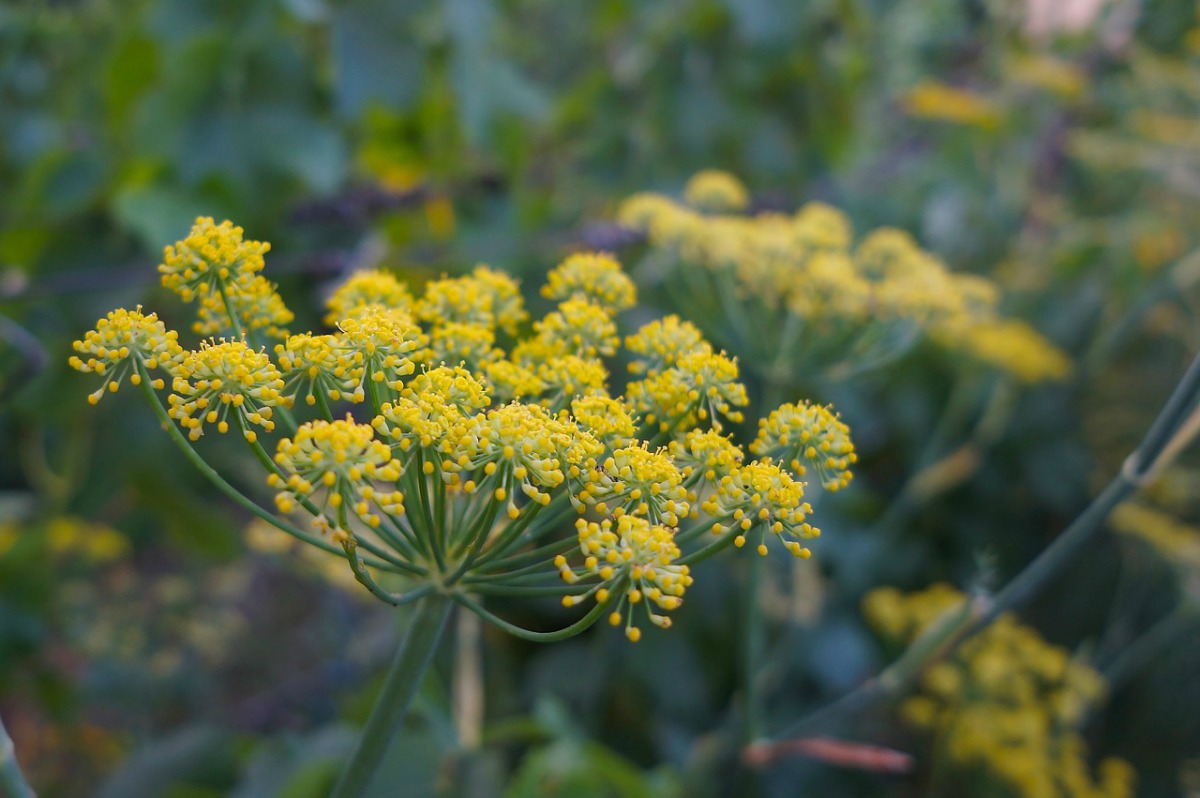
Fennel (Foeniculum vulgare), like its Apiaceae relatives dill and caraway, shows off in the fall with a burst of tiny seeds on an umbrella-like head. All of these carminative seeds can be easily harvested once dried on their stalk—dried fennel seeds that have just turned from green to a light brown color are perfect for harvest. Keep an eye on these, because once dried they easily fall to the ground and you’ll miss out! I like to harvest fennel seeds by snapping off the flower heads and placing them heads-down in a brown paper bag, then shaking the bag vigorously to release the aromatic seeds. Any stragglers can be removed from their stalks by brushing lightly with your hand. Learn more about using fennel right here.
Chaste tree (Vitex agnus-castus) is a perennial shrub that grows to tree-like heights so you don’t want to harvest the seeds by removing the branches. Instead, let the small berries dry to brown on their spikelets, then strip them from the branches with one hand, holding a bowl underneath to catch them as they fall. (Be sure to enjoy their peppery, musky aroma as you do this!) Once harvested, you can store chaste berries in an airtight container or tincture immediately in 95% alcohol (like Everclear, or a high-proof vodka). Either whole berries or tincture are beautiful allies that support female reproductive health (Romm, 2010).
Saw palmetto (Serenoa repens) is prolific here in Savannah, GA, and I’ve been lucky to find some beautiful stands this year. Because the deer and other wildlife seem to love this plant, I try to harvest them beginning in October when I spot the ripe fruits, which change from orange color to a deep purplish-black and about ¼” in diameter (leaving plenty for the animals, of course). I pick these berries individually by hand, but I’ve seen others hold a bowl under the cluster of ripe fruits and give it a good whack, which releases them. Once harvested, these can be tinctured fresh or dried on screens. The drying process takes a while, so note that it’s important to have sufficient heat and circulating air to prevent them from rotting before they dry. Another thing to keep in mind is that some areas have laws in place to reduce over-harvesting because they’re such a popular remedy for male reproductive health, so check with your local cooperative extension before harvesting from public land.
Roots & Barks
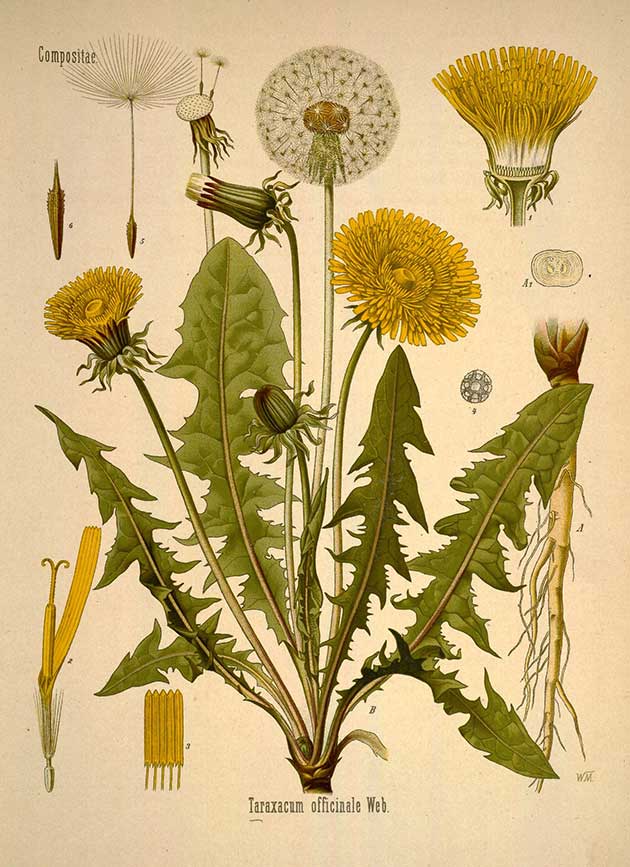
Dandelion (Taraxacum officinale), like other herbal roots, can be harvested both in spring and autumn, when the phytochemical concentration is higher. Remember that the plant’s properties will be slightly different, depending on the harvest season. Spring dandelion root contains more bitter compounds (which makes sense when we think of it as a popular herb used for “spring cleaning,” or liver support). Fall-harvested dandelion root, on the other hand, is higher in inulin (the same goes for chicory), because the plant is beginning to store its sugars and other nutrients for the coming winter season. This makes it a great herbal prebiotic to support gut health. Dandelion root is harvested in the fall after the flowers have died, so it’s harder to spot—but worth it! I like to use a nice sharp hori hori to get the root out of the ground in as close to one piece as possible, and dry the roots whole. Learn more about using dandelion here.
Poke (Phytolacca americana) is wonderful, and to put it lightly, is a strong herbal remedy. When used internally as a lymphatic, extremely small doses are employed. I generally recommend that non-practitioners stick with topical use, such as adding infused oil to a castor oil pack. Poke root can be harvested in the fall after the berries and stalks have shriveled. The fresh root is caustic (and more so in the spring than in the fall, when it’s less toxic), so it’s important to use gloves when harvesting and processing the root before it has completely dried. It’s also huge—the smallest poke roots can be the size of large carrots, and large roots can be enormous, so harvesting them in one piece can be nearly impossible. If you choose to harvest poke, be mindful not to go overboard, as one small root can make a lot of preparations of your choice! Once you’ve dug the root, slice diagonally and dry on screens before infusing in olive oil or tincturing.
Bayberry (Myrica cerifera) is an aromatic, deciduous shrub that can be harvested at this time of year—just in time to prepare it for the cold and flu season, when it can be helpful to relieve nasal congestion and sinusitis (Pursell, 2016). Traditionally, the root is dug in late fall; to separate the inner bark from the root, it can pounded while still fresh, or you can use a vegetable peeler to remove the root bark in long strips, then dry them on a screen for a few days before storing. If you find a bayberry shrub in the fall, you might also notice the grayish-colored clusters of berries growing along the branches, which can also be harvested. The fruits themselves are actually dark purple in color, but are crusted with a waxy substance that can be removed from the fruit by boiling, then cooled and skimmed from the top of the pot. Early American settlers used this delightfully fragrant wax for candles—hence another common name for this plant: wax myrtle!
And An Autumn Flower…
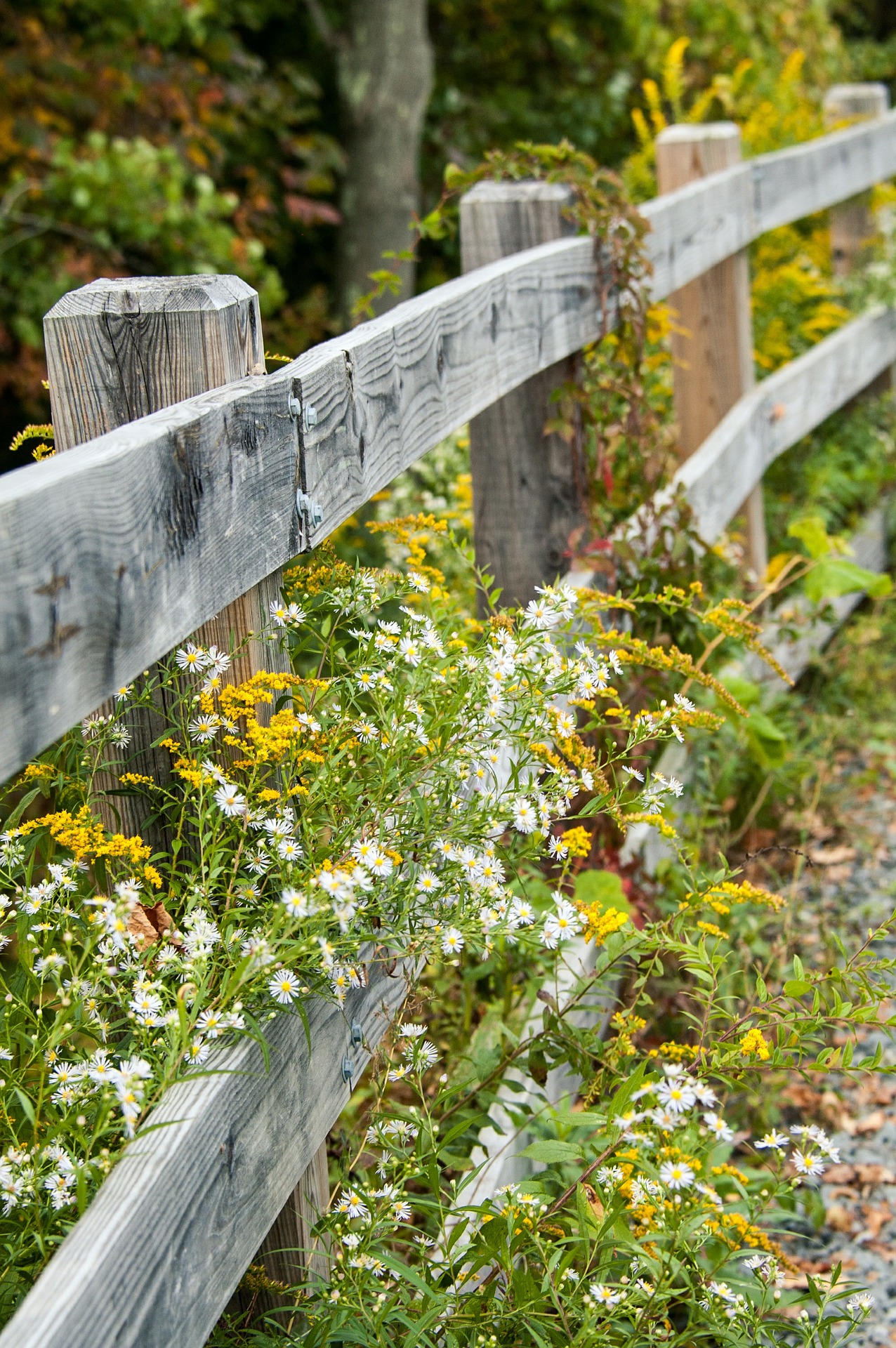
Goldenrod (Solidago spp.), with its bright yellow flower spikes, is abundant in many temperate areas, and is one of few flowers that flourish this late in the year, so take advantage! Because the flowers are so small, it may be easiest to harvest entire flower stalks, hanging them upside down in brown paper bags with holes cut for ventilation. Check periodically, shaking the bags and removing the blooms that fall. This is another plant that makes a nice tea for winter (it is antimicrobial, anti-catarrhal, and anti-inflammatory!) (Braun & Cohen, 2007), or try infusing the dried flowers in oil for a relaxing muscle rub. You can learn more about goldenrod’s benefits right here.
If you are thinking about harvesting fall herbs, these are just a few that can be harvested at this time of year—and admittedly, they’re all ones that are local to the southeastern US.
What plants are local to you and ready for fall harvest? What herbal concoctions are you planning to make in these cooler days and nights? Let us know on Facebook and Instagram—and post pictures using the hashtag #myherbalstudies!
Error, group does not exist! Check your syntax! (ID: 5)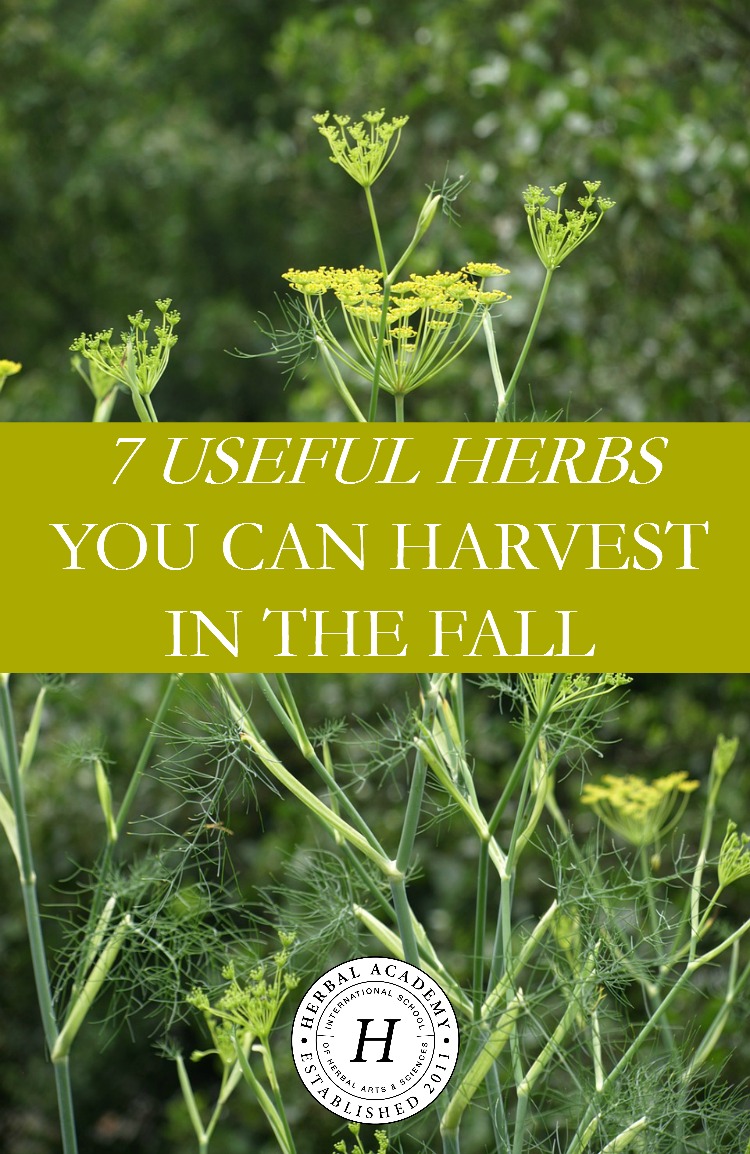
REFERENCES
Braun, L. and Cohen, M. (2007). Herbs & natural supplements: An evidence-based guide. 2nd ed. Sydney, Australia: Churchill Livingstone.
Pursell, J.J. (2016). The herbal apothecary: 100 medicinal herbs and how to use them. Portland, OR: Timber Press.
Romm, A. (2010). Botanical medicine for women’s health. St. Louis, MO: Churchill Livingstone.







